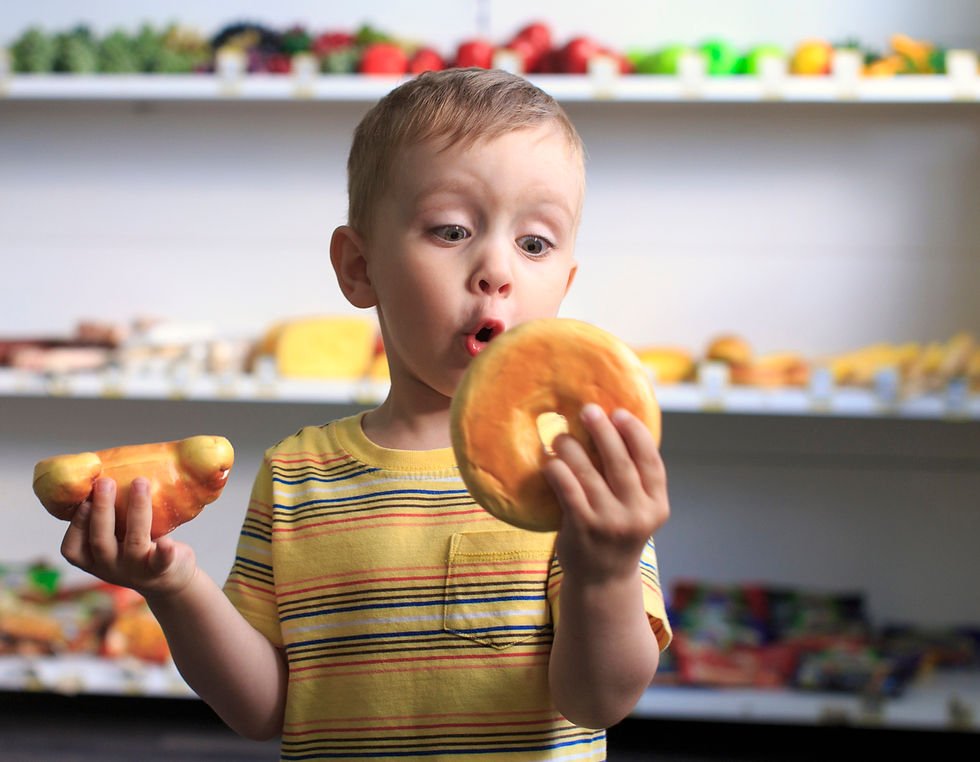Employee Wellness: Baby-Led Weaning – Is It Right for You?
- Wellness Workdays
- Dec 9, 2022
- 3 min read

If you are thinking about having children, are already pregnant, or know someone who is, chances are you have heard of baby-led-weaning (BLW). This method of introducing solid foods has become increasingly popular in recent years. But what is BLW, exactly? And is it right for you and your little one? Read on to find out!
What is Baby-Led Weaning and How Does it Work?
BLW is a style of parenting where you allow your baby to self-feed with solid foods from the start. That means skipping the purées and baby food and letting your little one feed themselves finger foods from the get-go. The idea is that babies are born with an innate sense of how much they need to eat, and that by allowing them to feed themselves, they will naturally self-regulate.
The Benefits of Baby-Led Weaning
Proponents of BLW describe a number of benefits. First, it can help babies develop their fine motor skills. For example, rather than just opening up their mouths for a purée-laden spoon, babies who are practicing BLW fine-tune different hand grip styles. A second benefit of BLW is that it can give babies a sense of control and independence at mealtime. And third, it can be a lot of fun! BLW can be messy, but it's also a great way for babies to explore new textures and tastes.
Potential Cons of Baby-Led Weaning
There are a couple of potential concerns with BLW, and they include:
Higher choking risk: some families express a heightened concern around choking, though the concern has not been substantiated by research.
More mess: since babies are feeding themselves, there is a good argument to be made that this method is messier than the traditional spoon-feeding method.
Signs Your Little One is Ready for Baby-Led Weaning
BLW is a great way to transition your baby to solid foods. But how do you know if your baby is ready? Here are a few signs to look for:
Your baby is at least 6 months old. This is the minimum age recommended by most experts.
Your baby can sit upright with minimal support. This helps to ensure that your baby can eat and swallow solid foods safely.
Your baby has started to show an interest in food. This may include reaching for food, putting things in their mouth, or trying to grab food off your plate.
If you think your baby is ready for BLW, talk to your pediatrician to be sure. They can help you get started and offer advice on what foods to introduce and how to avoid choking hazards.
Is Baby-Led Weaning Right for Your Family?
Now that you know a little bit more about BLW, you might be wondering if it's the right choice for you and your family. The truth is that there is no one "right" way to start solid foods—it's all about what works best for you and your baby. Some parents prefer the traditional spoon-feeding method because it feels more controlled and less messy. Others find that BLW is a more natural fit for their parenting style. There are pros and cons to both methods, so it's important to do some research and figure out what feels right for you.
No matter which method you choose, starting solid foods is a big milestone for both you and your baby! If you're still on the fence about whether or not BLW is right for you, talk to your pediatrician or another trusted healthcare professional. They can offer additional guidance and support as you make this decision.
Learn more about Wellness Workdays and our wellness program offerings by downloading our brochure.
Written by: Carley Bowering, Wellness Workdays Dietetic Intern
Sources:
1. Healthline
3. BMJ Journals



